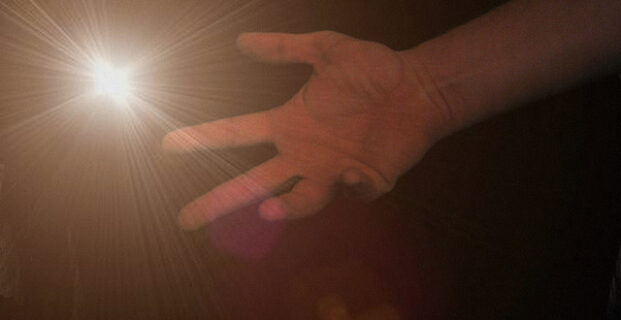Then he said to Thomas, “Put your finger here and see my hands. Reach out your hand and put it in my side. Do not doubt but believe.” (John 20:27)
The resurrected Christ kept his wounds. But why? What does it say to us that the very first fruit of God’s new Kingdom kept his wounds? Are not all things to be made new? Are not all things to be made whole? Are we not to expect God’s heavenly outcome to be one of perfect health and perpetual youth in the flawless garden? Why the wounds? Where they kept for a witness? Would the disciples not have believed had the resurrected Jesus been without the wounds? Did they need the scars to know the Christ? Were they kept just for Thomas, who asked for them in particular, or were they kept for the whole church as well?
I must conclude that since the wounds of Christ were a part of the witness of John’s Gospel to the church, they were in some way meant for the church as a whole – which means they were meant for you and me. And if kept for us all, then what was kept by keeping the wounds? Were they kept as a sign for us of “the way”? Were they present as pointers, not just to to the cross of Jesus, but to ours as well? Had the wounds been cleared, would the church have forgotten the way of the cross? Is the church to know something important about its own wounds? Is there something important I am to understand about my own wounds and their place in eternal things? To what does this presence of wounds invite me?
And might these wounds of Christ also tell us something about not just our own journey, but also about God? Are they windows into God’s soul, indicators not just of the condition of skin, but also of the condition of heart? Perhaps they were not scars at all, but living wounds, still active and marking not a past experience but a present and ongoing reality? Have these wounds now become part of the Godhead, changing the eternal nature of things? Do they tell us that wounded-ness is now woven into the very fabric of the universe, and that God himself is a wounded healer?
Julian of Norwich, that Christian mystic who so sought to identify with the suffering of Christ said, “Our wounds become our honors.” I think she was speaking of honor not as pride, but of humility. And I think she was speaking of wounds not as a badge of honor but as a path to honor. For Julian, our wounds are the very tools of finding right relationship to ourselves, each other and God. Without them we would most certainly drift down the path of false independence and the illusions of self-sufficiency. Without them, we most certainly would retreat from the difficult work of truth telling and true loving. Our wounds remind us of our limits and our need for each other and for God. Our nagging wounds are what keep us from settling for the shallow and the cheap. Our persistent wounds are what force us to accept the wounded-ness of others, and thereby learn compassion.
In other words, there can be no resurrection without the cross, and there can be no cross without the wounds of the cross. And if Jesus kept his wounds, I guess I am to keep mine as well. Rather than regret them and hide them, perhaps I should learn to accept them and wear them as my own path to honor – the true humility that honors God and all that God has created. And if the resurrected Christ still wears his wounds, I guess mine will never go away either. We might as well be friends, and in friendship there will be healing.
So, fellow followers of Christ, let us also be willing and able to show our own wounded hands to each other and the world. Because far from being signs of shame, they are rather signs of the honorable humility that is the Way of the Cross.
The Rev. Jerry Cappel is the Environmental Network Coordinator for Province IV of the Episcopal Church. Learn more about Jerry at his website and blog.


Follow Us!